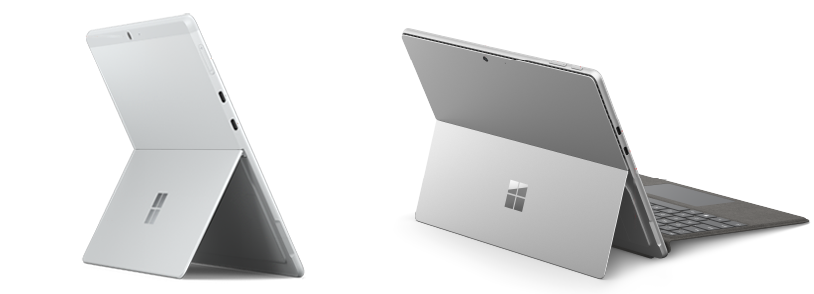I’ve never really been a huge fan of the Surface Pro line. I always preferred the Surface Book or Surface Laptop over the 2-in-1 tablet-first form factor from Microsoft. That was, until the Surface Pro X came along in 2019. The design of the Surface Pro X was the first to really tempt me away from the Surface Book 2 I was using at the time, but it wasn’t until 2021 that I finally took the plunge.
Since then, I’ve used a Surface Pro X for all my light computing needs. Whenever I’m just writing, or doing a bit of traveling, or partaking in a workload that I know Windows on ARM can handle, I’m using the Surface Pro X. I love its thin and lightweight design, with zero seams and excellent battery life. In its platinum colorway, it’s arguably the best-designed Surface PC.
So, when the news broke that Microsoft was planning to merge the Surface Pro X with the Surface Pro 9, I was excited. Finally, the Surface Pro X would be getting the recognition it deserves as a “real” Windows PC. On paper, it’s a change that makes sense, as it signifies to potential buyers that the Windows on ARM variant isn’t something to be skeptical of. It’s just a PC, like all the other PCs.
But the reality of merging these two lines is that it’s less beneficial for actual Surface Pro X users. Those of us who bought into the Surface Pro X did so not just for the SoC, but for its design, which is still unmatched even by its successor, the Surface Pro 9 5G. The Surface Pro X is still thinner and lighter, with a seamless design compared to the Surface Pro 9.
The design of the antennas on the Surface Pro 9 5G is abhorrent when compared to the antenna design of the Surface Pro X, which looks much cleaner as it’s housed in a single plastic strip along the top of the device. Compare that to the several smaller plastic lines that now surround the product on the Surface Pro 9 5G.
You may think these changes are minor, but I disagree wholeheartedly. I think a successor to the Surface Pro X that features a design that is less portable is a crying shame. When compared side by side, the Surface Pro X feels like it’s from the future. It feels like the “next generation” of the Surface Pro 9, even though the reality is the opposite.

It’s kind of similar to how I feel about the Surface Duo 2 compared to the Surface Duo 1. The Surface Duo 1 is incredibly thin and light, and when compared to the thicker and heavier Surface Duo 2, feels like it’s from the future. But the changes made to Surface Duo 2 were arguably needed, whereas I don’t think the same can be said for the Surface Pro X and Surface Pro 9 5G.
I’ve never found the Surface Pro X to have poor battery life or slow performance for the workloads I use it for, nothing that would warrant it being thickened for a bigger battery or better cooling anyway. So I don’t see why the Surface Pro 9 5G needs to be the same thickness and weight as the Intel Surface Pro 9.
Even the “seam” for the fan on the Intel version is carried over to the Surface Pro 9 5G, just without the actual vents. It still looks like a seam, so the design is less concise compared to the Surface Pro X. The Surface Pro 9 5G feels bigger and heavier, and I enjoy using it less as a result. It’s back to being like the older Surface Pros, which I didn’t enjoy.
Merging these two lines us less beneficial for existing Surface Pro X users.
Don’t get me wrong, the Microsoft SQ3 is a great upgrade over the SQ2, but I don’t think “more performance” is enough reason to change up the perfect design of the Surface Pro X. And I fully admit that these complaints are a serious first world problem, but as someone who bought into the Pro X line for its design, the Pro 9 5G is disappointing.
My ideal Surface Pro X successor would have been something that maintains the same thin and seamless design, but with the more powerful SQ3 and a 120Hz display. That’s pretty much all I wanted out of a Surface Pro X with SQ3, but sadly, that’s not what we got. We got a bigger, bulkier Surface Pro 9 5G that is more powerful and has better battery life, but as the cost of its futuristic design.
And if you think the Surface Pro X would need to be thicker to house the SQ3 anyway, that might be true. But when I look over the fence into the iPad world, and see Apple fitting a more powerful M2 processor into the body of an 11-inch iPad, that excuse has much less of a leg to stand on.




